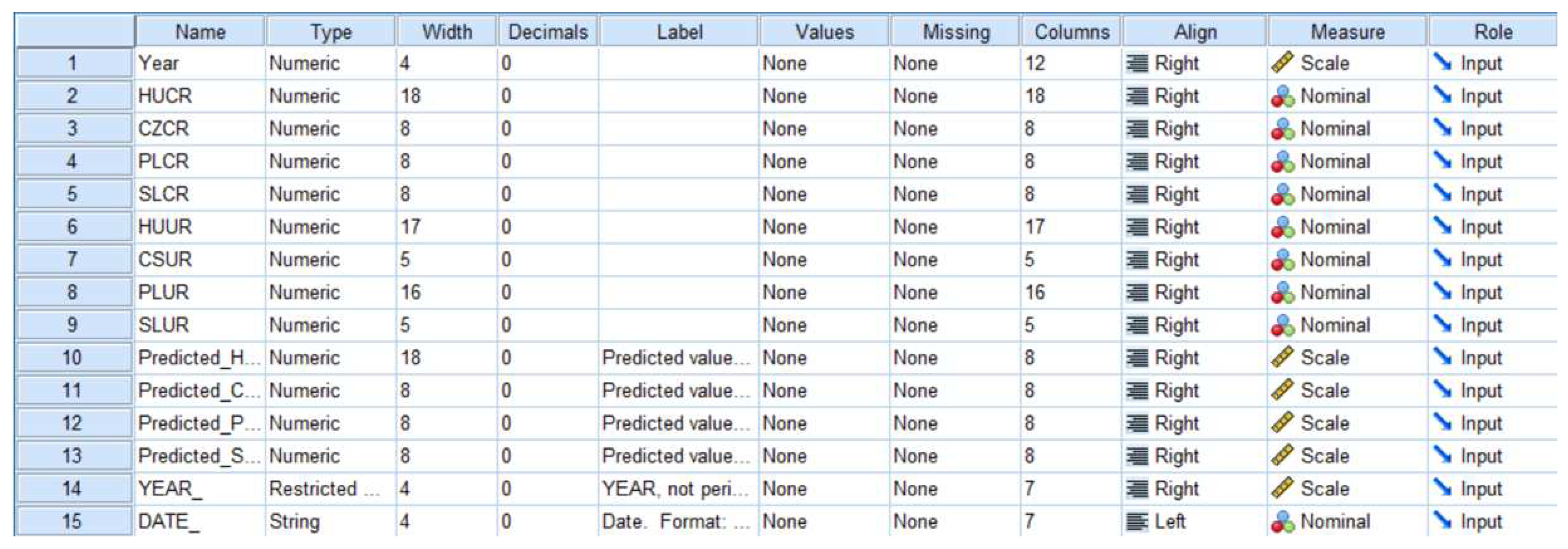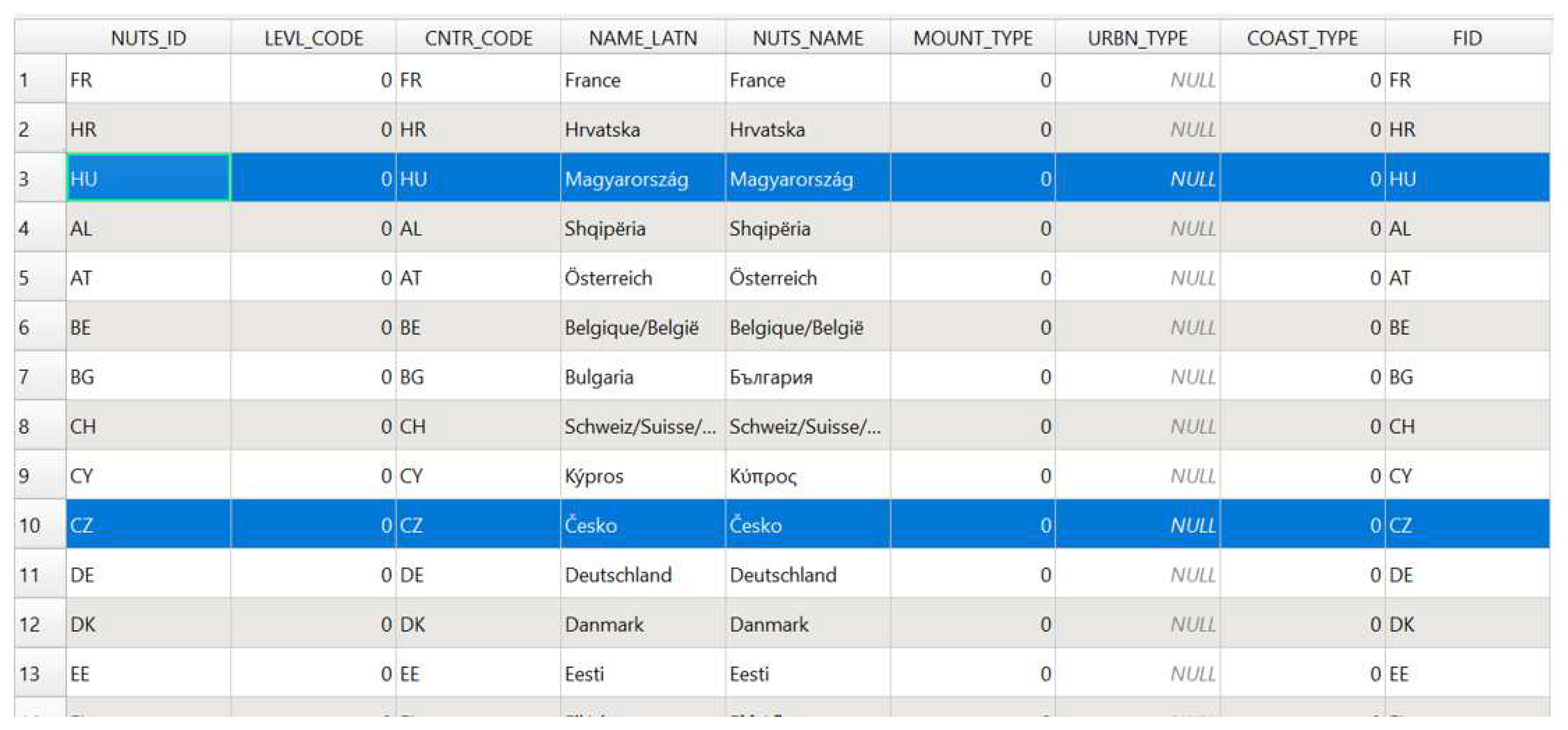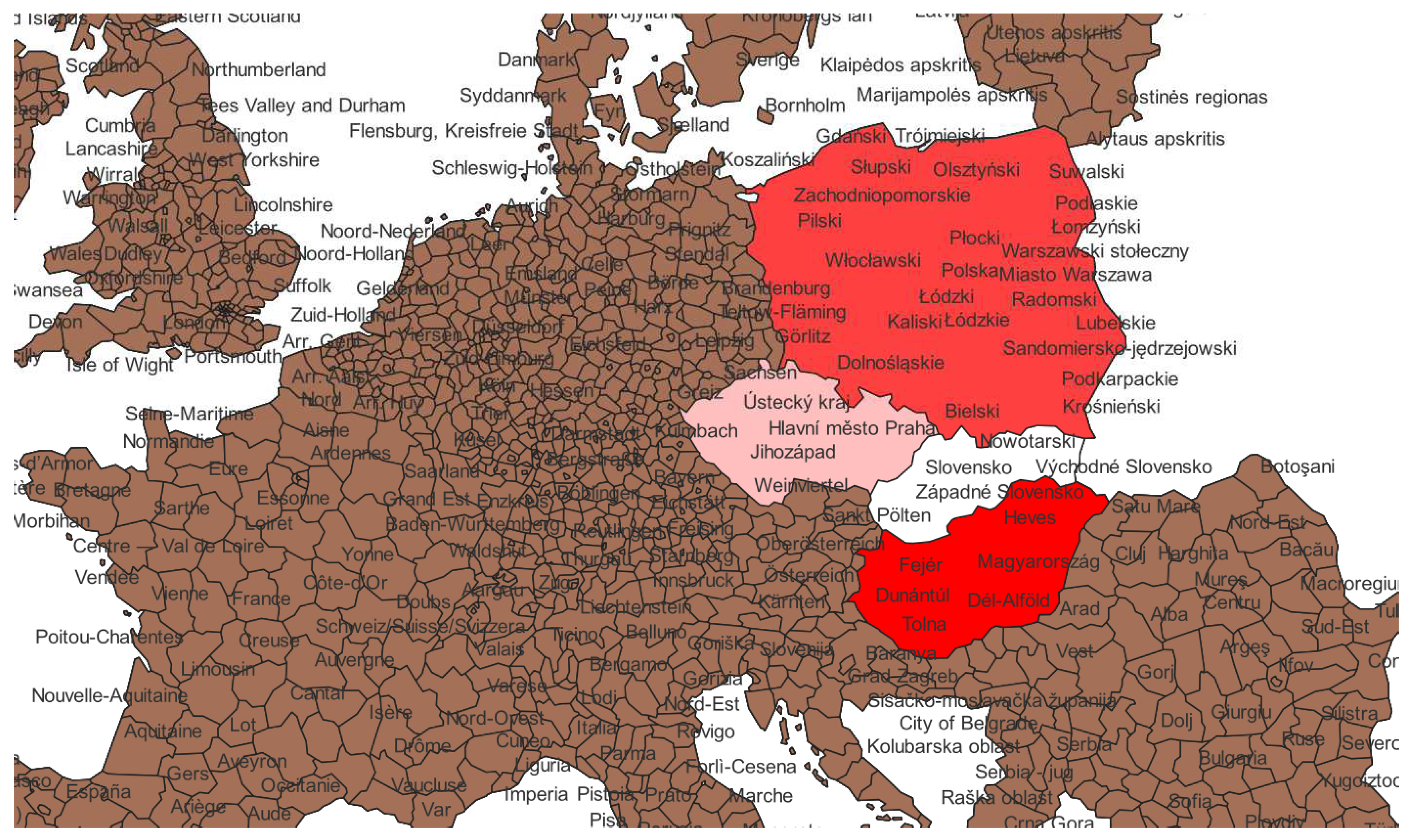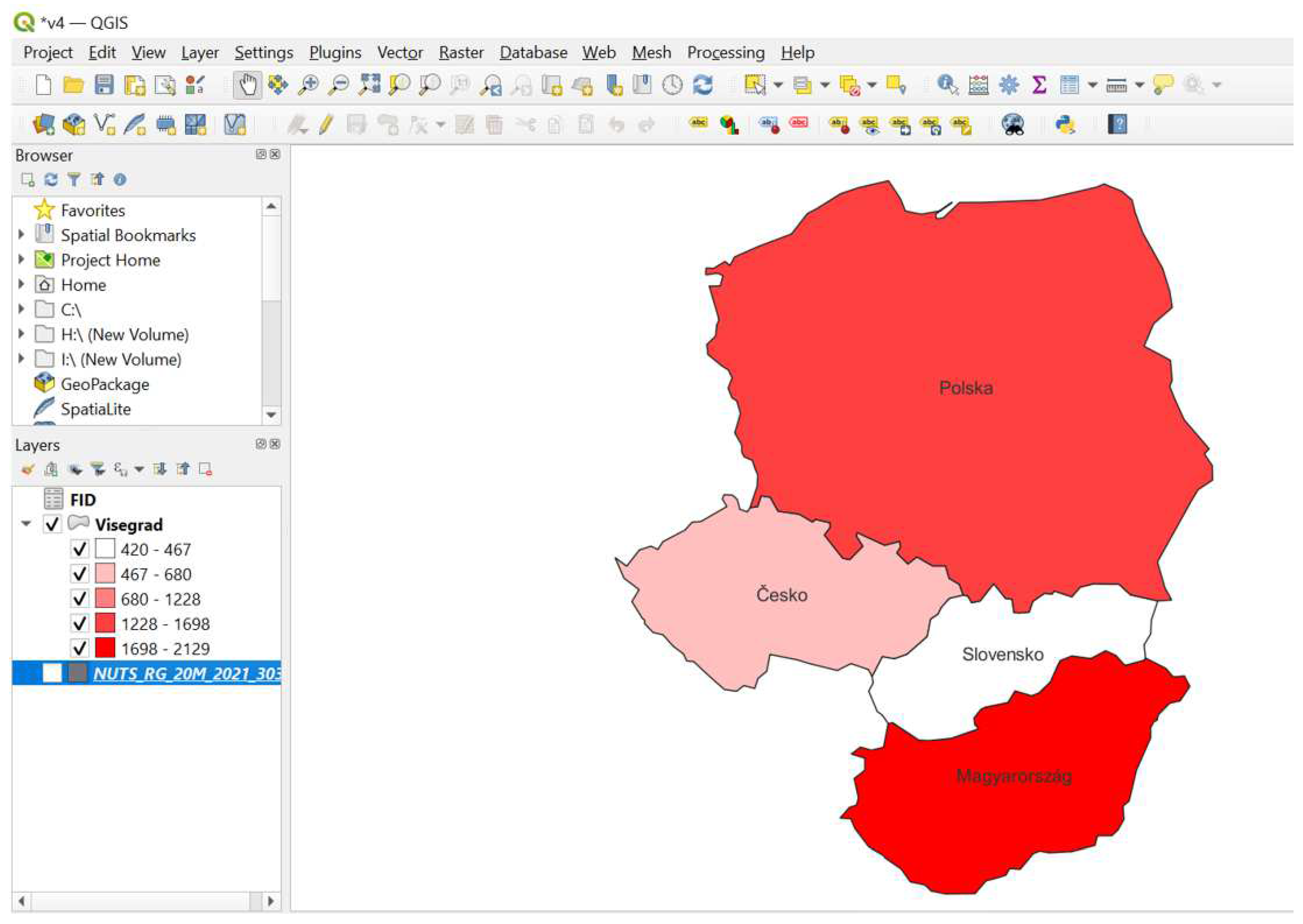The fact that the world is now a global village that is extensively interconnected can be credited to digitalization, which has been a major instigator of transformations in many areas of life. Smart data analytics and informatics (artificial intelligence in specialty applications) are primary tools supporting digitalization and are taught in academia and discussed in research across multiple fields of study. Countries have evolved, incorporating digital innovation and tools in industries, healthcare, public governance, entertainment, education, travel, logistics, agriculture, banking, safety, and security, and are passionate about being smart in business as well as in public administration. Urban safety and security are pressing societal problems. Nowadays, we can see the integration of many data-driven insights into planning, forecasting, and managing urban safety and security. For instance, the authors of [
1,
2] point out several aspects involved in solving urban safety problems, e.g., social, technological, administrative, urban, and societal.
We have a keen interest in the integration of data analysis and smart analytics into public safety administration. Such findings can be deployed to enhance the presentation, promotional analysis, planning, forecasting, and management of urban safety and security problems [
3]. As such, a vital exercise would be focusing on the geographical distribution of crime intensity in particular countries using crime statistics. Moreover, this can be extended into predictive crime analysis and mapping, taking social statistics (where unemployment is in the analysis scope of this study) into account as an influencing factor in geographical safety and security assessment. Unemployment arises from social disorganization in the community. This is elaborated on in later sections to justify the broader scope of the subject; here, we are focusing on the urban nexus of crime in the community and unemployment [
4,
5]. Many studies indicate the importance of crime rates in security decision making and planning. There is always a need for the integration of widespread data insights into unified analyses and/or platforms for administrative assessments. Furthermore, the quest to apply such data analysis and modelling techniques to planning will help with future visualizations.
The results of this study would not only be easy to apply to planning, but would help make future predictions and geo-characteristic models based on selected variables using QGIS. This study addresses how effectively we can utilize crime rates and time-series forecasting using autoregressive integrated moving average (ARIMA) models in SPSS based on a predictor time series, which in this study is the unemployment rate.
As part of the literature review, we review predictive analyses regarding crime data statistics and methods. This study contributes towards filling the gap in the geographical and data heat map representation of predicted crime rates in V4 countries. The tools to be used are QGIS, taking advantage of secondary data from official police portals, crime statistical resources, and World Bank indicators regarding unemployment. We have found a strong relationship between the crime rate and the unemployment rate in the V4 countries Hungary, Czech Republic, Slovakia, and Poland.
1.1. Brief Methodological Review of the Literature
This study is a part of the research investigating complex problems such as the identification of hotspots via isolation based on the predicted values in a certain area (county, city, country, or region). For example, the authors of [
7] have identified some computational methods for crime hotspot identification. The main algorithms used in the literature are time-series prediction methods—SPSS, R, and other modelling software. Another method is K-means clustering, which provides clusters within a range of values to segregate high- and low-risk areas based on the crime rate (or, for instance, to predict sales, consumer demand, and high/low sales areas). That is a helpful method when many areas of analysis are under observation.
Visualization also plays an important role. We have adopted QGIS software for the professional mapping of crime in the four countries being analysed, i.e., the Czech Republic, Hungary, Poland, and Slovakia in 2020. We have taken the data for yearly crime rates from cited sources for 2013–2019. The unemployment rates are for 2013–2020 (SPSS needs the predictor variable values to predict the dependent variable at the prediction phase of the time series, i.e., 2020 crime rates). This can help not only with security administration in a particular area; with more in-depth data, more insights could be obtained to improve law and order in a particular area [
7]. It is worth mentioning the limitations of statistical objectivity in terms of crime categorization in a certain region. The willingness of the public to report crimes leads to the further categorization of crime statistics into reported, recorded, cleared, and prosecuted and convicted crimes. The police and community dynamics play a vital role in all steps of criminal procedures and prosecution. Moreover, there are subjective factors when dealing with crimes that include public perception, police effectiveness, fear among the public, law and order, public awareness, and more [
8].
The authors of [
9] applied ARIMA models along with other contemporary time series prediction and/or forecasting methods in case-based scenarios for security applications, indicating the need for such forecasting in the security administration to deliver the best public services with limited resources. For that, we need efficient and needful resource allocation where there is a need. As the authors of [
10] also mention, such insights are very beneficial for police and military units. The authors of [
11] analysed the differences between multi- and univariate ARIMA models, indicating the wide usage of such forecasting models and how these functions work. The authors of [
12] extended the use of time series forecasting in advanced algorithms of machine learning as ARIMA and seasonal ARIMA into traffic forecasting, combining the models to discuss seasonality.
The authors of [
13] discussed the constraints when carrying out studies where crime statistics are involved. The phrase “reported crime” or “crimes known to the police” is used instead of overall crime in police statistics as a good basis for a crime index (sometimes along with statistics on the whole process of penalization, depending on the nature of the study). Methodological considerations are of concern in this regard, which have been supported by many contemporary data analysis methods [
14] in recent studies, but still with some limitations—for instance, when conventional crime indexes per 100,000 population normal values for crimes ((total recorded/pop) × 100,000) are constructed. However, we have to question the significance of scaling and the use of such conventions in less populated urban areas [
6,
15]. There are also many studies that emphasize time series analysis by data computing methods, which can be practiced on various secondary data sources such as crime and public safety surveys [
16]. The authors of [
17] explain some geospatial insights using open-access data visualization tools. The authors of [
18] discussed the importance of underlying crime rate analysis since increased figures in a city hinder economic activity and immigration. The crime rate also has emotional implications for locals and newcomers. The authors of [
6,
19,
20] also highlight such implications from crime, emphasizing the promotion of analysis and the need for the standardization of both data and survey-based indicators of crime indexes to cater to the interests of stakeholders in public safety and security. Furthermore, it is important to compare the seasonality and non-seasonality-based forecasting methods ARIMA and GPF-ARIMA (Geographic probability method: a new geographic/spatial time series method introduced by [
21] as the most suitable forecasting method with the lowest scaling error) [
9]. However, more sophisticated data and spatial probability models using kernel density functions are needed, which could be a novel extension to the findings of this article.
The data-based situational assessment of public safety and security using forecasting models leads to the re-organization and modernization of old-fashioned administrative systems and platforms. In this era of visual communication, it is not practical for the general public (as informed users of information) or the decision makers (advanced users of information) to dig into large data sheets to identify areas of concern [
22,
23,
24]. Instead, data models should use socioeconomic factors (unemployment rate) and stack them onto the raw data (crime and population statistics). However, we have identified challenges and limitations in public data integration. The cleansing of the data and the standardization of the units of analysis need special attention prior to data input into the forecasting and mapping tools.
This study concerns future innovations in urban safety and security administration and monitoring systems. It concludes by creating a system for the development and diffusion of new technology in ongoing project operations and processes. The authors of [
23,
25] emphasized advancement-driven monitoring, control, and strategic resource allocation planning based on scenario change analysis [
26]. This study proposes that such findings be added to industrial and governmental system modifications and rollouts as part of a security policy for crime prevention, thereby aiding problem solving in regions of concern [
1,
8,
27,
28]. In any country, these safety and security reforms and data insights are important, as is addressing other socioeconomic problems. However, the nature of the other variables may vary considering regional, cultural, legal, political, and institutional mores and capabilities [
29,
30].
In addition, the technological advancement and upgrading of pre-existing public safety and security structures are useful. Statements of support from UN organizations and agencies for these initiatives can be translated into urban security advancements, unified crime, and analysis. As the authors of [
31,
32] discussed, fighting crime is important to ensure public safety.
The focus of this study is on the data aspect of predictive public safety and security assessment using a predictive time series analysis and choropleth mapping. The research objectives are summarized as follows, in line with the research questions.












